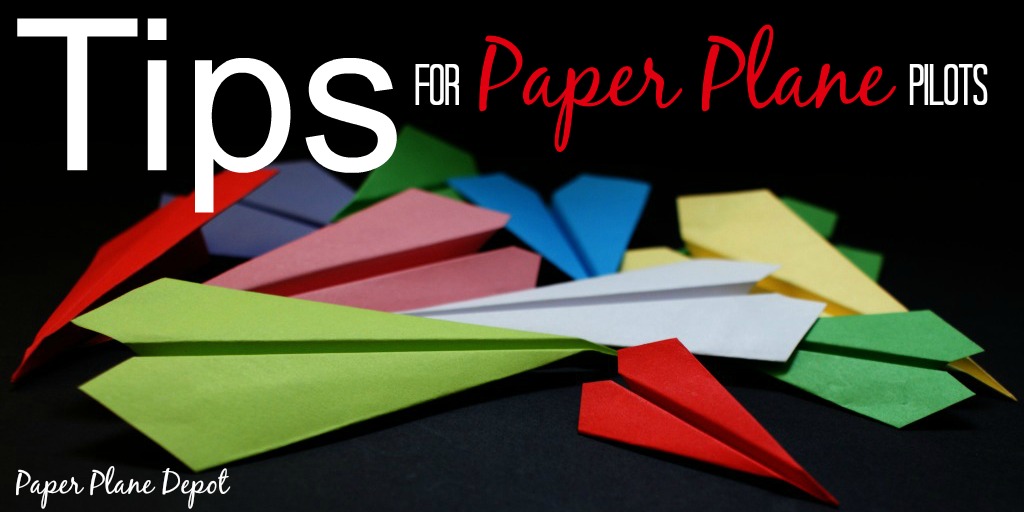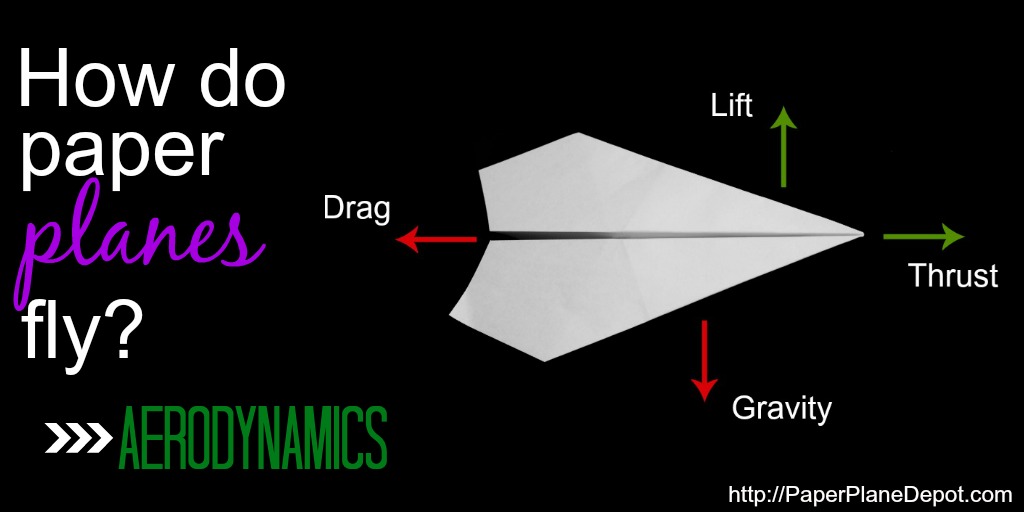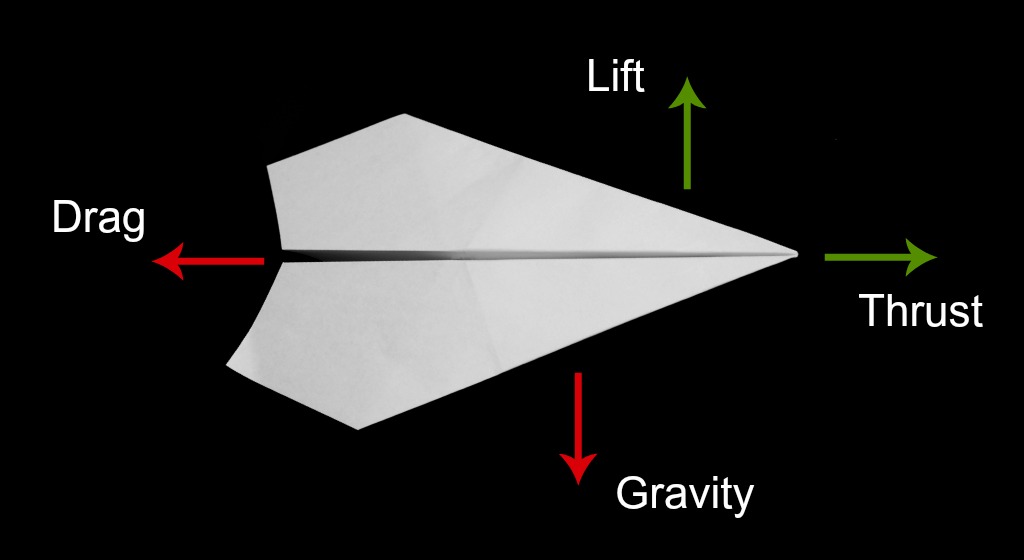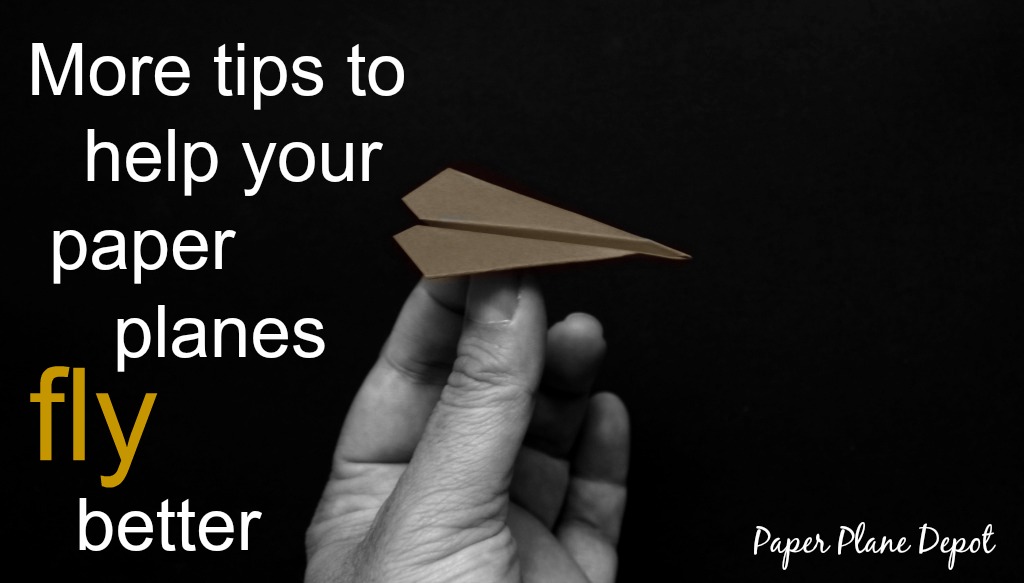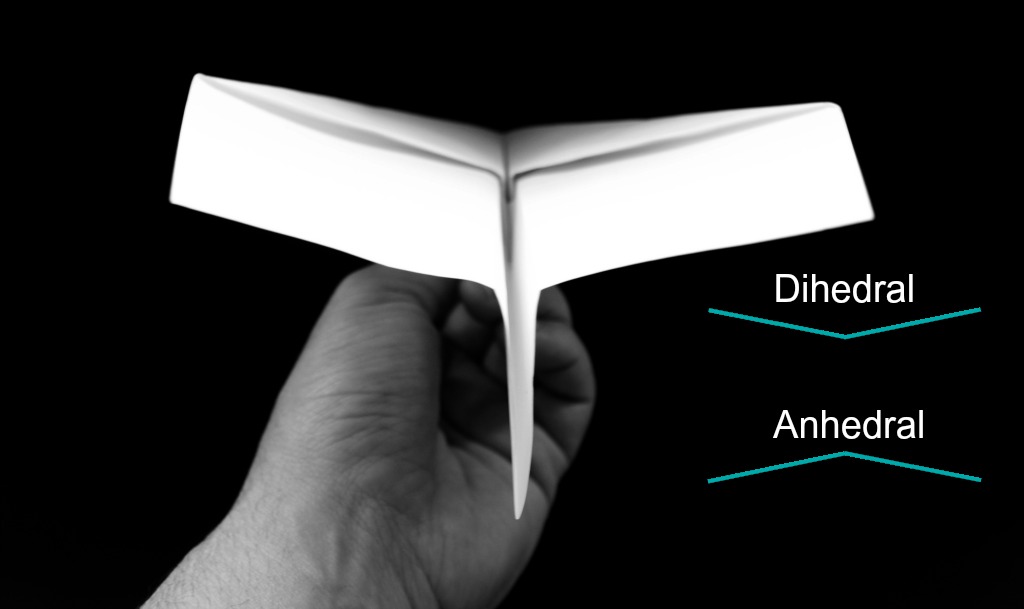Jump to a topic:
Aerodynamics
Drag
Thrust
Gravity
Lift
Symmetry
Wing Angle
How paper planes fly
Aerodynamics
Aerodynamics is the study of airflow (and other gases) and how it moves around things.
The word aerodynamics is taken from two Greek terms – aer (air) and dynamics (power).
There are four aerodynamic forces that really effect how your paper airplane flies – drag, gravity, thrust and lift.
Drag
Drag is resistance. Paper airplanes that have a lot of drag will have shorter flights because it’s harder for them to push through the air.
Drag experiment
Part 1
Take a piece of paper (one that’s not too stiff) and hold it at the bottom. Wave the paper from side to side, like a flag. Can you feel the air pushing against it? Can you see the top part of the paper being pulled back when you wave it?
Now turn the paper around so that when you wave it, you’re using the thin edge to cut through the air. Can you still feel the air pushing against it?
Which way has the most drag? Is it when you have the biggest, flat side of the paper pushing through the air or when you have the smallest, thin edge of the paper?
Yep that’s right, the larger, flat side has the most drag on it – that’s what’s making the top part of your paper pull or be ‘dragged’ back.
Part 2
Before you finish this experiment, cut through the air again with the thin edge. Now fold the paper in half to make an L shape. Cut through the air a few more times with the thin edge. Can you feel a bit more resistance now that you’ve made the flap?
That’s what happens when you make paper planes – the shape of the wings, flaps, body of the plane etc all respond differently to ‘drag’. All planes have the force of drag acting on them. But if you make a paper airplane with lots of flat expanses sticking out, you’ll increase the drag and your plane won’t be able to fly as far.
Thrust
Thrust is the opposite force to drag. In planes, thrust is a mechanical force (generated by the engines) that makes the plane move through the air.
Thrust experiment
Take a piece of paper and make a paper airplane. Here are some instructions to make some cool paper planes.
Once you’ve made your plane throw it, but very gently. Where did it land?
Throw the plane again but this time, throw it as far as you can.
We already know from our earlier drag experiment that drag will pull the plane back. We can use thrust to overcome the drag. The more thrust we apply to our plane the further and faster it flies.
In a real airplane, thrust is made by the engines. Paper planes don’t have engines so what’s giving them thrust?
Gravity
Gravity is the force that acts to pull everything towards the centre of earth. Weight measures how much gravity is pulling on an object. So the heavier someone or something is, the greater the force of gravity that is acting on them.
Gravity experiment
Part 1
Take a bag and fill it with as many things as possible – books are usually pretty handy. Once it’s full, slowly pick it up. Feel its weight. Feel how much gravity is pulling the bag and its contents down towards the centre of the earth.
Now empty your bag. Slowly pick it up. Feel how light it is now. There’s less weight, less gravity pulling it downwards.
Part 2
Take a piece of paper and make a paper plane. Here are some instructions for making a paper airplane.
Once you’ve made your plane hold it in the air then let it go. Which direction did it go? Downwards? You’ve just seen gravity take hold of the plane that you’d placed in the air and pull it down.
Lift
Lift is the force that opposes gravity. Lift is what keeps a plane in the air.
How lift works is pretty tricky and involves mass, momentum, energy. There’s a lot of misunderstanding about the theory of how lift is created but everyone agrees that lift for a plane is mostly created by its wings.
Lift experiment
You’re going to make two paper planes that match in every way except for their wings. On your first plane make very small wings. On the second plane make normal wings. Fly one plane then the other and observe how each of them fly.
What differences did you see? Did the plane with small wings fly a shorter distance? Did it drop down to the ground more quickly?
How did the plane with the normal sized wings fly? Did it stay in the air for longer?
That ability to stay in the air longer means that you created more lift in the second plane. It was able to fight the force of gravity better than the first plane.
More tips for better flying planes
Symmetry
The most important thing when you’re folding a paper airplane is to make each side symmetrical (each side must match). Don’t worry if you muck up a fold on one side – just make sure you match it on the other.
Wing Angle
If your wings are angled slightly up, then your plane will have more stability. Wings that are angled up are ‘dihedral’. Wings that are angled down on a plane are called ‘anhedral’.
